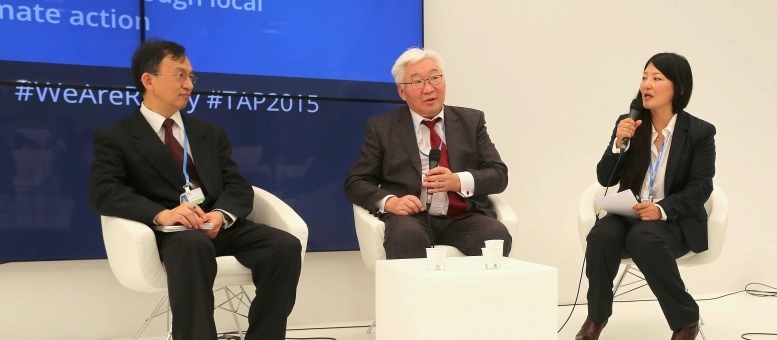Vulnerable Johannesburg lays the foundation for a climate-resilient future
Johannesburg is very vulnerable to floods, heat waves and migration from neighbor countries due to climate change.
The city developed a comprehensive Climate Change Adaptation Plan (CCAP) to identify weaknesses and actions to be undertaken.
A Bus Rapid Transit initiative will reduce CO2 emissions by 1.6 million ton before 2020.
Johannesburg is the largest city in South Africa, with over 3 million inhabitants. It is also the economic centre of the country, with a large scale diamond and gold trade, thanks to its proximity to the Witswatersrand hills. More than 70 percent of South African companies have their headquarters in the city and Johannesburg’s airport is the largest in Africa, serving as a gateway for international travels to and from southern Africa. Its overall infrastructure regarding finance, municipality, road and telecommunication is comparable to leading world cities, being one of the reasons for the city’s strong growth.
But this growth means also that urbanization is on the rise. The number of informal settlements is increasing and the lack of infrastructure and the poverty of their dwellers are unfortunately exacerbating the risk of disasters for those communities.
Recent floods in Johannesburg demonstrated exactly how vulnerable the city is to climate risk. This and other challenges from a changing climate (i.e. increase in heat-related deaths; increase in energy demand; health risks related to disease vectors; disruption of water security; climate change-driven migration from sub-Saharan Africa) have been identified during a city-wide vulnerability assessment carried out in 2009. The assessment identified key risks within the city, based on climate projections developed specifically for the project.
It provided the basis for the city to develop and launch a comprehensive Climate Change Adaptation Plan (CCAP), which prioritizes strategic investments and activities to reduce climate risks. For instance, as weather patterns projections forecasted an increase in heavy rains, flood-prone areas were mapped and early warning systems were developed, as the city promoted an awareness campaign for vulnerable communities.
The CCAP was one of the 29 projects globally nominated for the C40 & Siemens Climate Leadership Award.
With a data-driven approach the city is trying to increase its resilience, also integrating the CCAP recommendations into both long-term city strategy and day-to-day operations. Which means reviewing and or amending policies, planning controls, planning standards, regulations and legislation to facilitate climate change adaptation.
The city has a number of mitigation projects, ranging from energy efficient street lighting to waste minimization to the rediscovery of the basa nje ngomagogo, a traditional method of making fires that produces less smoke and air pollution. As Johannesburg is one of the largest CO2 emitters of the continent, many projects aim at reducing emissions and air pollution. One of the most interesting experiences developed in Johannesburg is the Rea Vaya, the first Bus Rapid Transit (BRT) initiative on the African continent. The long-term goals of the programme are to cover 330 km, reach more than 80 percent of Johannesburg’s residents and reduce CO2 emissions by 1.6 million ton before 2020. To achieve this emissions reduction, the city government hopes to get 15% of the car-using population to switch to buses.
“We are a city at work to remake itself and shape its future, as a sustainable, livable and resilient city. A city that cares for its people and their future” said mayor Mpho Parks Tau. “Rea Vaya project is the catalyst for a public transport transformation, that will be followed by investments in schools, clinics and social housing on its route, bringing sustainability and social inclusion to vulnerable quarters of the city”.
The third and last phase of the project was launched in February 2014. The results so far are encouraging: 71,000 people have been using Rea Vaya daily, exceeding the initial 65,000 estimate, and many more (200,000) are expected by the end of phase 3 in 2020. The BRT might also be a powerful job-creator, as a total of 51,000 jobs are expected to be created by 2016. The city is also reporting on the carbonn Climate Registry.





